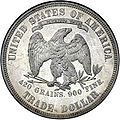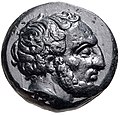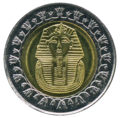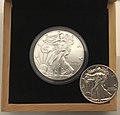The Numismatics Portal

Numismaticsis the study or collection ofcurrency,including coins, tokens, paper money, medals and related objects.
Specialists, known asnumismatists,are often characterized as students or collectors ofcoins,but the discipline also includes the broader study ofmoneyand other means ofpaymentused to resolvedebtsand exchangegoods.
The earliest forms of money used by people are categorised by collectors as "odd and curious", but the use of other goods in barter exchange is excluded, even where used as a circulatingcurrency(e.g.,cigarettesorinstant noodlesin prison). As an example, theKyrgyz peopleusedhorsesas the principal currency unit, and gave small change inlambskins;the lambskins may be suitable for numismatic study, but the horses are not.[dubious–discuss]Many objects have been used for centuries, such ascowry shells,precious metals,cocoa beans,large stones,andgems.(Full article...)
Selected article -
Abullion coin(also known as aspecie) is acoinstruck from highly refinedprecious metal(bullion) and kept as astore of valueor an investment rather than used in day-to-day commerce. A bullion coin is distinguished by its weight (or mass) andfinenesson the coin. Unlike rounds, bullion coins are minted by government mints and have alegal tenderface value. Bullion coins can have fineness ranging from 91.9% (22 karat) to 99.99% purity (24 karat).
For theVATexemption purposes theUnited Kingdomdefines investment coins more specifically as coins that have been minted after 1800, have a purity of not less than 900thousandthsand are, or have been,legal tenderin their country of origin. UnderUnited Stateslaw, "coins" that fail the last of these requirements are not coins at all, and must be advertised as "rounds" instead. (Full article...)Selected image

Credit:User:Chris.B&Sniff
Did you know...

- ...that with itstwo-dollar coin(reverse pictured),Newfoundlandwas the only British colony to issue circulating gold coinage?
- ...thatMount Burgessis nicknamed theTen Dollar Mountainbecause it was featured onCanadian currency?
- ...that theAmerican Buffalogoldbullioncoinwas the first.9999 fine 24-carat gold coin released by theUnited States Mint?
- ...that theAlabama centennial half dollarwas the firstcommemorative coinminted with the image of a living individual?
- ...thatAksumite currencywas the only native coinage to be issued inAfricawithout direct influence by an outside culture likeRoman,Greek,etc...?
Related portals
Selected coin -

Thedaricwas agold coinwhich, along with a similar silver coin, thesiglos,represented the bimetallicmonetary standardof theAchaemenid Empire.
Cyrus the Great(550–530 BC) introduced coins to the Persian Empire after 546 BC, following his conquest ofLydiaand the defeat of its kingCroesus,who had put in place the first coinage in history. It seems Cyrus initially adopted the Lydian coinage as such, and continued to strike Lydia's lion-and-bull coinage. (Full article...)Selected banknote image -

Credit:commons:User:WikedKentaur.
A circulated 1Soviet ruble,issued in1961.The color theme is a tradition that can be traced back toImperial time..
General images -
Numismatic terminology
- Bullion– Precious metals (platinum,goldandsilver) in the form of bars, ingots or plate.
- Error– Usually a mis-madecoinnot intended for circulation, but can also refer to an engraving ordie-cutting error not discovered until the coins are released to circulation. This may result is two or more varieties of the coin in the same year.
- Exonumia– The study of coin-like objects such astoken coinsandmedals,and other items used in place of legal currency or for commemoration.
- Fineness– Purity ofprecious metalcontent expressed in terms of one thousand parts. 90% is expressed as.900 fine.
- Notaphily– The study of papermoneyorbanknotes.
- Scripophily– The study and collection ofstocksandBonds.
WikiProjects
Numismatic topics
Ancient currency:Asia-Byzantium-Greece-Primitive Money-Roman-Indian coinage
Modern currency:Africa-The Americas-Asia and the Pacific-Europe-Bullion coins-Challenge coin-Commemorative coins-Token coins
Economics:Banking-Bonds-Cheques-Credit Cards-Fiat currency-Gold standard-Mints-Monetary union-Reserve currency-Stocks
Production:Coining (machining)-Designers-Die making-Mint (coin)•Coinage Metals:Aluminum-Bronze-Copper-Gold-Platinum-Silver-Tin
Subcategories
Most traded currencies
| Rank | Currency | ISO 4217 code |
Symbolor abbreviation |
Proportion of daily volume | Change (2019–2022) | |
|---|---|---|---|---|---|---|
| April 2019 | April 2022 | |||||
| 1 | U.S. dollar | USD | US$ | 88.3% | 88.5% | |
| 2 | Euro | EUR | € | 32.3% | 30.5% | |
| 3 | Japanese yen | JPY | ¥ /Viên | 16.8% | 16.7% | |
| 4 | Sterling | GBP | £ | 12.8% | 12.9% | |
| 5 | Renminbi | CNY | ¥ /Nguyên | 4.3% | 7.0% | |
| 6 | Australian dollar | AUD | A$ | 6.8% | 6.4% | |
| 7 | Canadian dollar | CAD | C$ | 5.0% | 6.2% | |
| 8 | Swiss franc | CHF | CHF | 4.9% | 5.2% | |
| 9 | Hong Kong dollar | HKD | HK$ | 3.5% | 2.6% | |
| 10 | Singapore dollar | SGD | S$ | 1.8% | 2.4% | |
| 11 | Swedish krona | SEK | kr | 2.0% | 2.2% | |
| 12 | South Korean won | KRW | ₩ /원 | 2.0% | 1.9% | |
| 13 | Norwegian krone | NOK | kr | 1.8% | 1.7% | |
| 14 | New Zealand dollar | NZD | NZ$ | 2.1% | 1.7% | |
| 15 | Indian rupee | INR | ₹ | 1.7% | 1.6% | |
| 16 | Mexican peso | MXN | MX$ | 1.7% | 1.5% | |
| 17 | New Taiwan dollar | TWD | NT$ | 0.9% | 1.1% | |
| 18 | South African rand | ZAR | R | 1.1% | 1.0% | |
| 19 | Brazilian real | BRL | R$ | 1.1% | 0.9% | |
| 20 | Danish krone | DKK | kr | 0.6% | 0.7% | |
| 21 | Polish złoty | PLN | zł | 0.6% | 0.7% | |
| 22 | Thai baht | THB | ฿ | 0.5% | 0.4% | |
| 23 | Israeli new shekel | ILS | ₪ | 0.3% | 0.4% | |
| 24 | Indonesian rupiah | IDR | Rp | 0.4% | 0.4% | |
| 25 | Czech koruna | CZK | Kč | 0.4% | 0.4% | |
| 26 | UAE dirham | AED | د.إ | 0.2% | 0.4% | |
| 27 | Turkish lira | TRY | ₺ | 1.1% | 0.4% | |
| 28 | Hungarian forint | HUF | Ft | 0.4% | 0.3% | |
| 29 | Chilean peso | CLP | CLP$ | 0.3% | 0.3% | |
| 30 | Saudi riyal | SAR | ﷼ | 0.2% | 0.2% | |
| 31 | Philippine peso | PHP | ₱ | 0.3% | 0.2% | |
| 32 | Malaysian ringgit | MYR | RM | 0.2% | 0.2% | |
| 33 | Colombian peso | COP | COL$ | 0.2% | 0.2% | |
| 34 | Russian ruble | RUB | ₽ | 1.1% | 0.2% | |
| 35 | Romanian leu | RON | L | 0.1% | 0.1% | |
| 36 | Peruvian sol | PEN | S/ | 0.1% | 0.1% | |
| 37 | Bahraini dinar | BHD | .د.ب | 0.0% | 0.0% | |
| 38 | Bulgarian lev | BGN | BGN | 0.0% | 0.0% | |
| 39 | Argentine peso | ARS | ARG$ | 0.1% | 0.0% | |
| … | Other | 1.8% | 2.3% | |||
| Total[a] | 200.0% | 200.0% | ||||
Web resources
- NumisWiki
- International Association of Professional Numismatists
- American Numismatic Association
- American Numismatic Society
- British Numismatic Association
- American Vecturist Association
- Challenge Coin Association
- Numismatic Museum of Athens, Greece
- The Perth Mint Australia
- Central Mint of China
- Royal Mint
- The French Mint
- United States Mint
- Bank of Russia
- Royal Canadian Mint
- Exact Change numismatic software
Things you can do
|
|
Associated Wikimedia
The followingWikimedia Foundationsister projects provide more on this subject:
-
Commons
Free media repository -
Wikibooks
Free textbooks and manuals -
Wikidata
Free knowledge base -
Wikinews
Free-content news -
Wikiquote
Collection of quotations -
Wikisource
Free-content library -
Wikiversity
Free learning tools -
Wiktionary
Dictionary and thesaurus
Sources
- ^Triennial Central Bank Survey Foreign exchange turnover in April 2022(PDF)(Report).Bank for International Settlements.27 October 2022. p. 12.Archived(PDF)from the original on 2022-10-27.
- ^The total sum is 200% because each currency trade is counted twice: once for the currency being bought and once for the one being sold. The percentages above represent the proportion of all trades involving a given currency, regardless of which side of the transaction it is on. For example, the US dollar is bought or sold in 88% of all currency trades, while the euro is bought or sold in 31% of all trades.


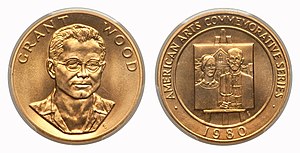

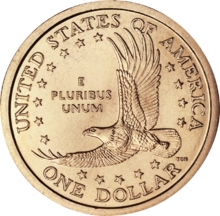

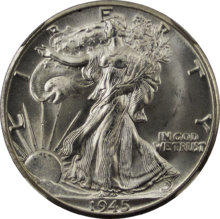
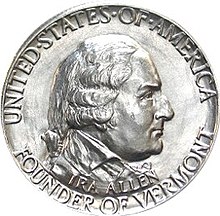
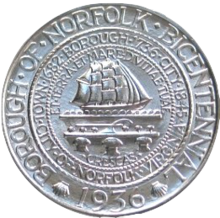
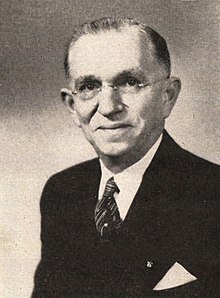
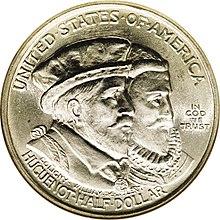






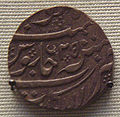








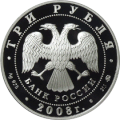



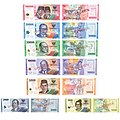




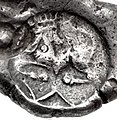








![Image 31Chinese round coins, Eastern Zhou dynasty – Warring States Period, c. 300–220 BC. Four Hua (四化, 30mm, 6.94 g). Legend Yi Si Hua ([City of] Yi Four Hua). (from Coin)](https://upload.wikimedia.org/wikipedia/commons/thumb/f/f9/CHINA%2C_Eastern_Zhou_dynasty_-_Warring_States_Period._State_of_Q%C3%AD._City_of_Yi._Circa_300-220_BC.jpg/120px-CHINA%2C_Eastern_Zhou_dynasty_-_Warring_States_Period._State_of_Q%C3%AD._City_of_Yi._Circa_300-220_BC.jpg)



